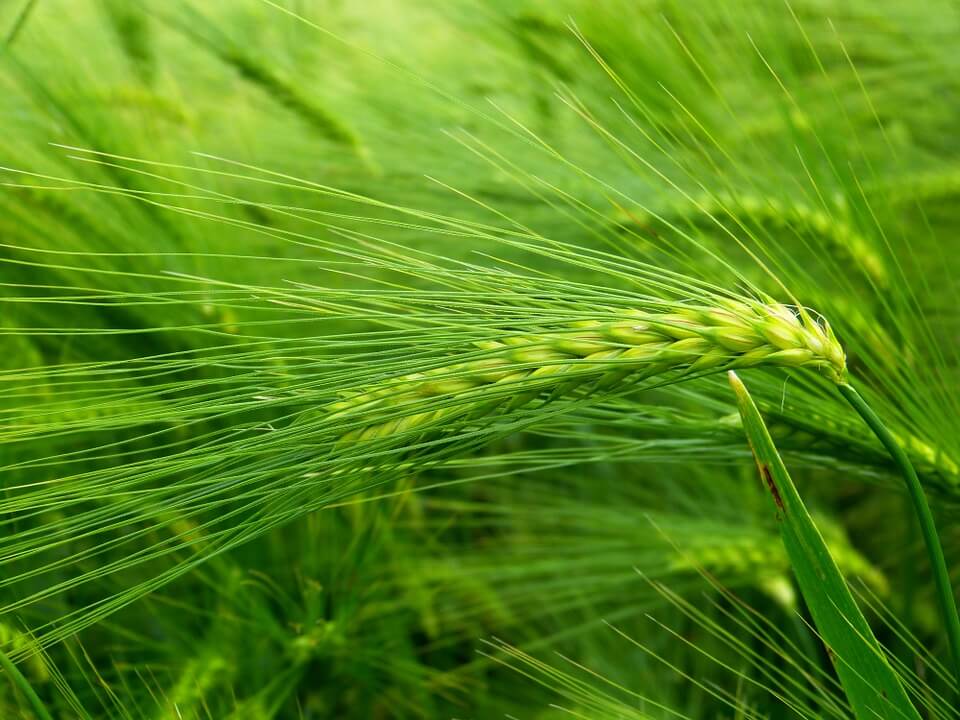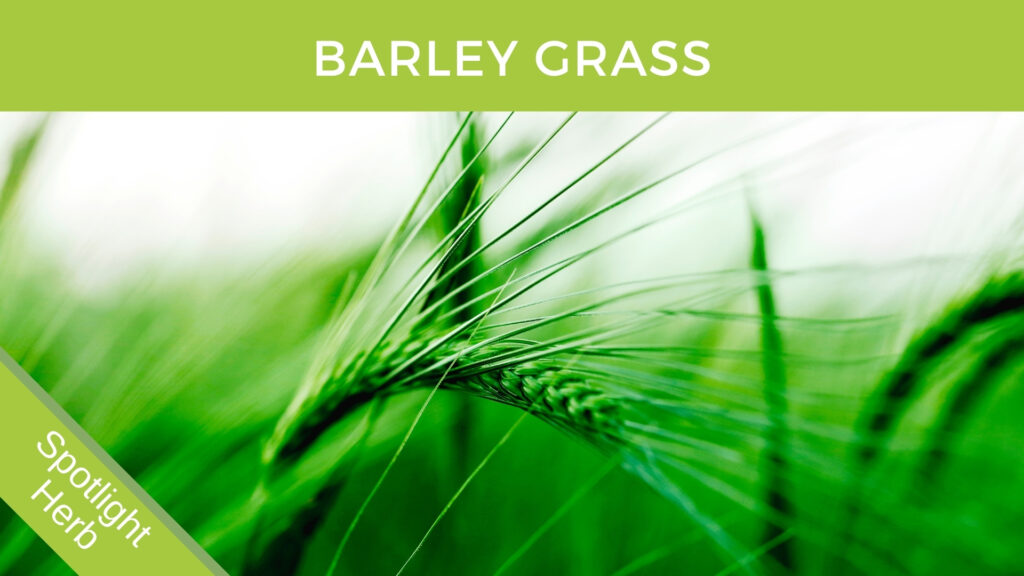- 9 months ago
- 5Minutes
- 1311Words
- 657Views
Barley Grass (Hordeum vulgare) is the common source of the grain Barley, but as a health-food, the powdered leaf is also very popular.
Until the 19th century, Barley was a major part of the diet of millions of people. Even now, it is eaten as such or in processed form. Consumption of Barley which contains many medicinally active phyto-compounds is usually associated with improvement in health. (1)
(1) Multiple pathways are responsible for Anti-inflammatory and Cardiovascular activities of Hordeum vulgare L. PUBMED https://www.ncbi.nlm.nih.gov/pmc/articles/PMC4258264/
(2) Therapeutic Potential of Young Green Barley Leaves in Prevention and Treatment of Chronic Diseases: An Overview. PUBMED https://www.ncbi.nlm.nih.gov/pubmed/26477798
(3) Flavonoids with potent antioxidant activity found in young green barley leaves. PUBMED https://www.ncbi.nlm.nih.gov/pubmed/22681491
(4) Free water-soluble phenolics profiling in barley ( Hordeum vulgare L.). PUBMED https://www.ncbi.nlm.nih.gov/pubmed/19228062/
(5) Effects of young barley leaf extract and antioxidative vitamins on LDL oxidation and free radical scavenging activities in type 2 diabetes. PUBMED https://www.ncbi.nlm.nih.gov/pubmed/11976562
(6) Fast Analysis of Superoxide Dismutase (SOD) Activity in Barley Leaves Using Visible and Near Infrared Spectroscopy. PUBMED https://www.ncbi.nlm.nih.gov/pmc/articles/PMC3472862/
(7) Sensitivity of Superoxide Dismutase Transcript levels and Activities to Oxidative Stress Is lower in Mature-Senescent Than in Young Barley Leaves. PUBMED https://www.ncbi.nlm.nih.gov/pmc/articles/PMC159628/pdf/1061033.pdf
(8) Exogenous Superoxide Dismutase: Action on Liver Oxidative Stress in Animals with Streptozotocin-Induced Diabetes. PUBMED https://www.ncbi.nlm.nih.gov/pmc/articles/PMC3061218/
(9) Superoxide Dismutase Mimics: Chemistry, Pharmacology, and Therapeutic Potential. PUBMED https://www.ncbi.nlm.nih.gov/pmc/articles/PMC2935339/
(10) Barley Sprouts Extract Attenuates Alcoholic Fatty Liver Injury in Mice by Reducing Inflammatory Response. PUBMED https://www.ncbi.nlm.nih.gov/pmc/articles/PMC4963916/
(11) Hepatoprotective effects of saponarin, isolated from Gypsophila trichotoma Wend. on cocaine-induced oxidative stress in rats. PUBMED https://www.ncbi.nlm.nih.gov/pubmed/21722413
Description
Barley Grass is a type of green grass and the only vegetation on the earth that can supply sole nutritional support from birth to old age. It contains a wide spectrum of vitamins, minerals, as well as eight essential amino acids that we must get from our diets. (2)
World literature, especially, Greek, Roman, and Egyptian literature points to the dietary and medicinal properties of Hordeum vulgare. It is a member of the grass family, Poaceae, is an annual crop used throughout ancient civilizations as an important food source.
Traditional Use of Barley Grass
Hordeum vulgare (or Barley) is used by traditional healers to treat various inflammatory and cardiovascular diseases. (1)
Barley has been used as a food material since ancient times and was one of the first cultivated grains, particularly in Eurasia, as far back as 13,000 years ago. Barley sprouts, which are the young leaves of Barley harvested approximately 10 days after sowing the seeds, have recently received much attention as a functional food in numerous countries, especially Japan and Korea. It has been reported that Barley leaves possess beneficial properties such as antioxidant, hypolipidemic, antidepressant, and antidiabetic. (10)
Barley Grass possesses several other pharmacological activities such as anticancer activity, and anti-inflammatory activity. It has been argued that Barley grass helps blood flow, digestion, and general detoxification of the body.

Active constituents
The main constituents of Barley include important antioxidants such as vitamin E, phytic acid, selenium, tocotrienols, and various phenolic acids. After the consumption of Barley, these antioxidants are released at a differential rate throughout the gastrointestinal tract over a long period of time (1)
The major pharmacologic interest of Barley Grass is its use in the treatment of chronic diseases. The beneficial effects observed in chronic disease may be related to bioactive compounds contained in Barley Grass such as superoxide dismutase (SOD) and bioflavonoids (Lutonarin and Saponarin). (2)
A total of 28 compounds were identified and quantified from Barley Grass, which included 4 phenolic acids, 6 C-glycosylflavones, and 18 O-glycosyl-C-glycosyl flavones, with some of them acylated. Distinct profiles were noticed among the analyzed materials. The greatest diversity of compounds was found in Barley leaves (26 flavonoids and 2 phenolic acid derivatives), which also exhibited the highest concentration of phenolics. Isoorientin-7-O-glucoside (Lutonarin) was the major compound in leaves, while, in general, the pair isovitexin-7-O-rutinoside plus isoscoparin-7-O-glucoside were the main phenolics in the other materials. (4)
Thus, Barley leaves may constitute an important dietary source of protective compounds.
Superoxide Dismutase (SOD)
Superoxide dismutase (SOD) is a protective enzyme. It has been identified as an essential component in organisms’ defense mechanisms. In plants, SOD plays an important role in protecting against environmental adversity, as it can remove the free-radicals caused by environmental adversity and improve stress tolerance. (6) Young and mature Barley grass leaves have a high steady-state level of these antioxidant enzyme activities. (7)
Oxidative stress has become widely viewed as an underlying condition in a number of diseases, such as ischemia-reperfusion disorders, central nervous system disorders, cardiovascular conditions, Cancer, and Diabetes. Thus, natural and synthetic antioxidants have been actively sought. Superoxide dismutase is the first line of defense against oxidative stress under physiological and pathological conditions. (9)
Saponarin
Barley leaf sprouts also contain a high content of the bioflavonoid saponarin, which has shown both anti-inflammatory and antioxidant activities. (10)
Scientific evidence
Anti-Cancer
Supplementation of young green Barley leaves containing Saponarin should be beneficial to health and may prevent diseases caused by oxidative damage such as various Cancers, inflammations, and cardiovascular diseases. (3)
Antioxidant
Supplementation with Barley Grass may help to scavenge oxygen free radicals, save vitamin E content, and inhibit oxidation, which may protect against vascular diseases in Type 2 Diabetic patients. (5)
Liver Protection
SOD has also been shown to reduce Liver oxidative stress in diabetic animals. (8)
All alcohol-induced Liver changes were effectively prevented by Barley sprouts treatment. This study suggests that the protective effect of Barley sprouts against alcohol-induced Liver injury is potentially attributable to its inhibition of the inflammatory response induced by alcohol. (10)
The results of one study proved the antioxidant activity of Saponarin and its protective effect against cocaine-induced oxidative stress and hepatotoxicity. (11)
Conclusion
Barley Grass is a rich food source of protective nutrients especially for the Liver and therefore makes an important addition to any detoxification program.
I hope this article has been helpful.
Many Blessings
Brett Elliott ©
Barley grass has been included in our following products:



